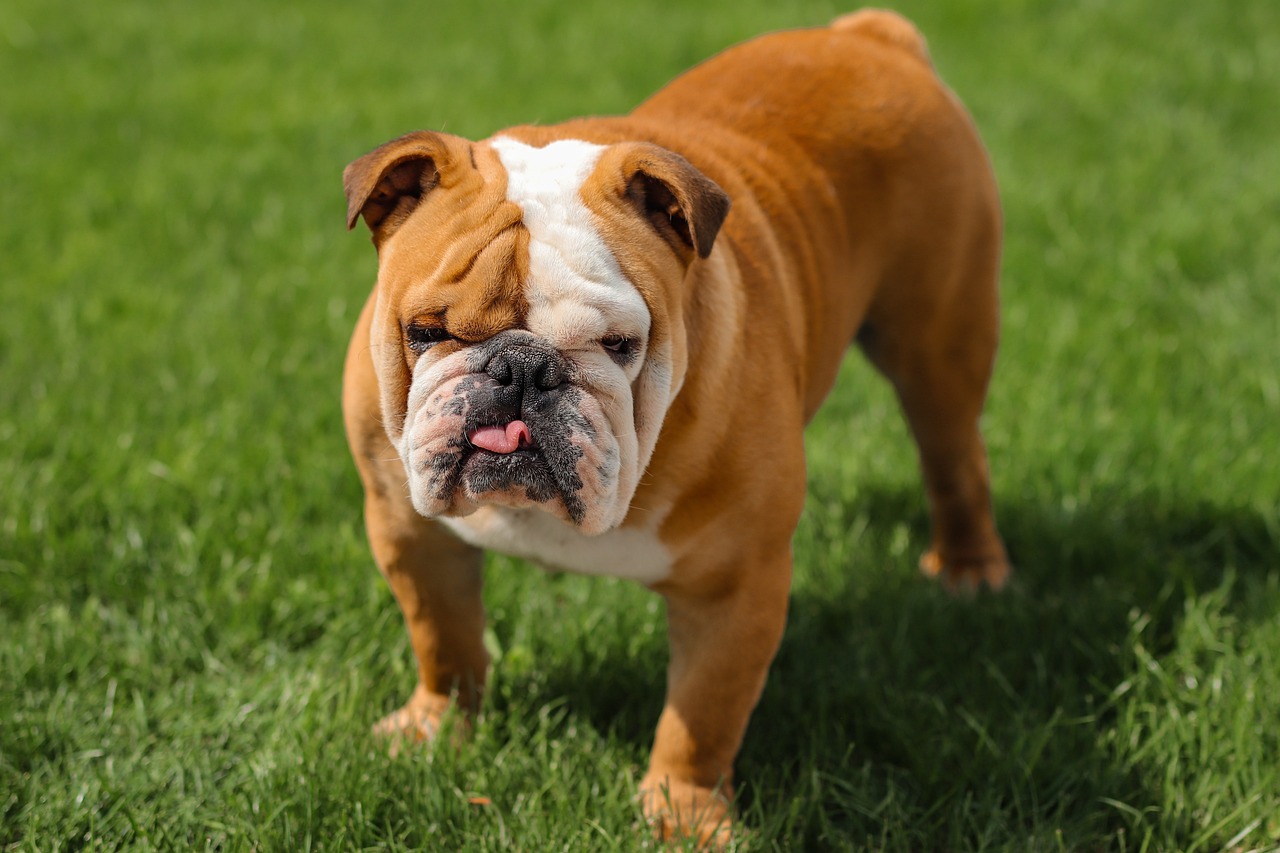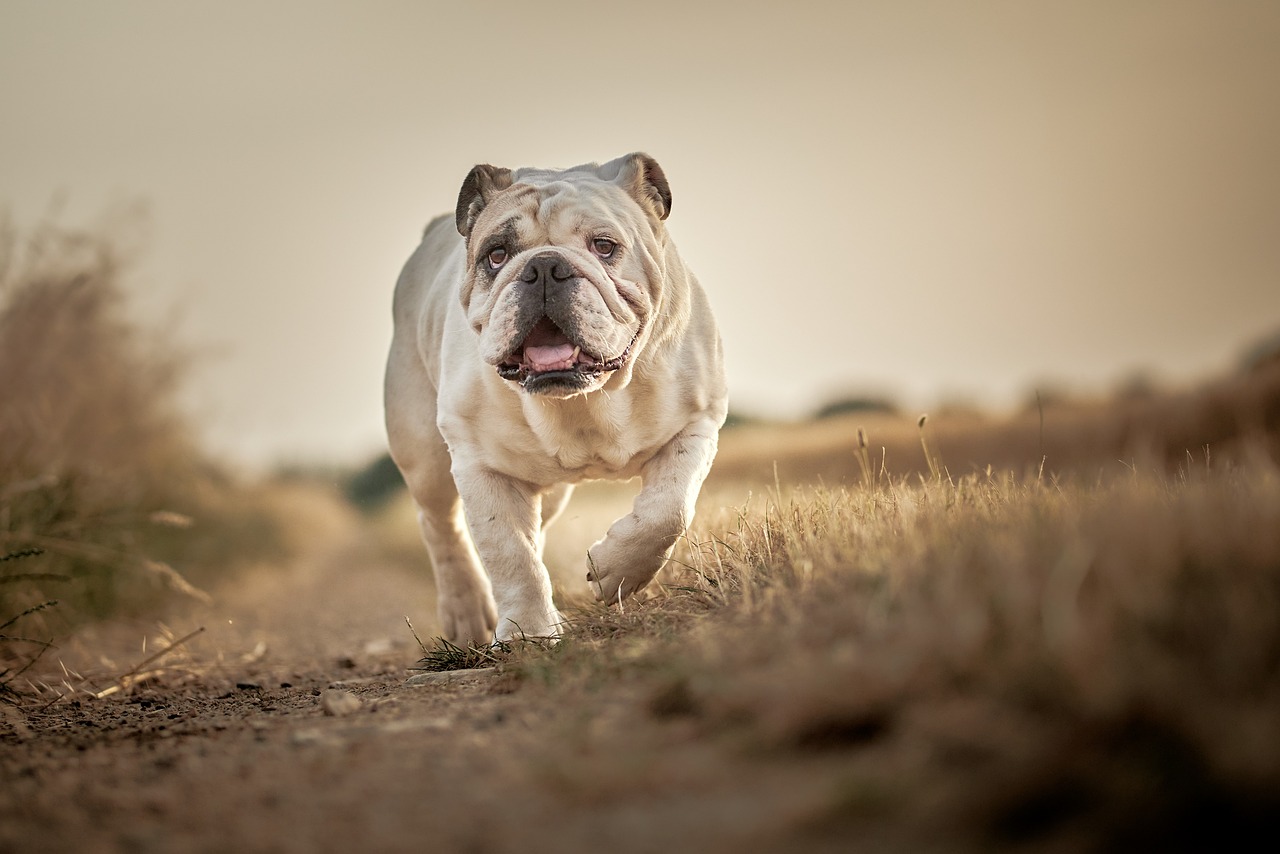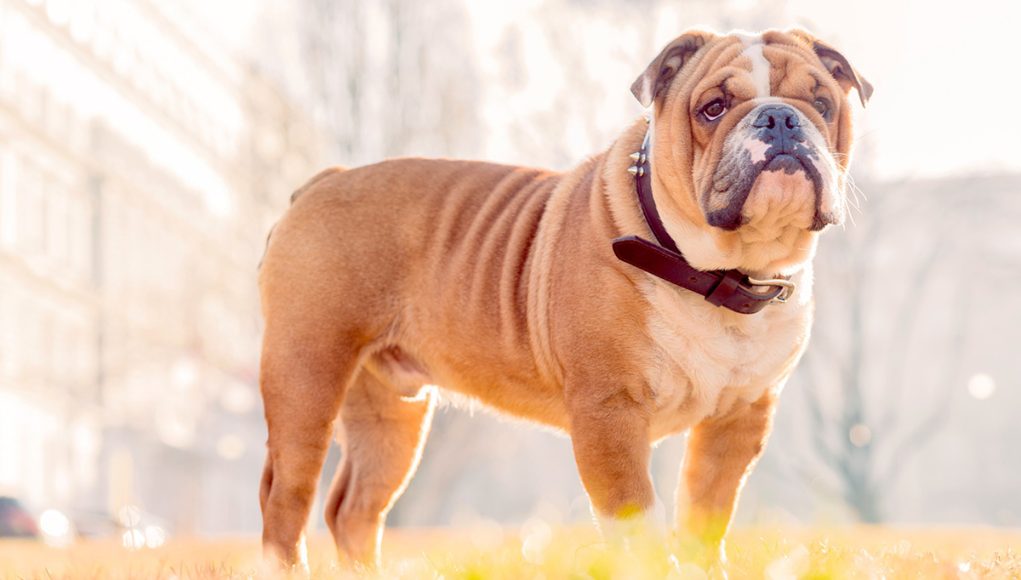The Bulldog, a breed known for its distinctive appearance and gentle disposition, is a favorite among dog enthusiasts and families alike.
This article aims to provide a comprehensive overview of the Bulldog breed, exploring its history, physical characteristics, temperament, care needs, health concerns, and more. Whether you’re a dog lover considering a Bulldog as your next pet or simply curious about this iconic breed, this guide will inform you about everything you need to know.
Bulldog : A Complete Guide for Dog
The Origins
The Bulldog’s history dates back to England, where it was originally bred for bull-baiting, a brutal sport popular in the 13th century. Bulldogs were valued for their strength, tenacity, and muscular build, which allowed them to grip bulls with their powerful jaws. However, as bull-baiting was banned in the 1800s, Bulldogs faced the risk of extinction. Thankfully, enthusiasts transformed the breed into a companion dog, focusing on developing a gentler and more docile temperament.
Fun Fact: Despite their fierce past, today’s Bulldogs are known for their laid-back and loving nature, making them ideal companions for families and city dwellers.
Physical Characteristics
Bulldogs have a distinctive appearance that sets them apart from other breeds. Here’s a detailed look at their physical traits:
- Size: Bulldogs are medium-sized dogs, typically weighing between 40-50 pounds (18-23 kg) for males and slightly less for females.
- Height: They stand about 14-15 inches (35-38 cm) tall at the shoulder.
- Coat Color: Their coat can vary in color, including shades of brindle, white, fawn, and piebald. The coat is short, smooth, and easy to maintain.
- Morphology: Bulldogs have a stocky and muscular build with a broad chest and thick neck. Their faces are flat with a short muzzle and characteristic wrinkles. Their ears are small and folded, and their eyes are round and dark, giving them a gentle, expressive look.
- Distinctive Features: One of the most iconic features of the Bulldog is its pushed-in nose and the pronounced underbite, which adds to its charming, sometimes grumpy appearance.
Comparison: Unlike the French Bulldog, which is smaller and has bat-like ears, the English Bulldog has a more robust build and a wrinkled face, giving it a distinctly different look.

The Temperament of the Bulldog
Bulldogs are known for their calm and affectionate nature. They are generally loyal, patient, and excellent with children, making them great family pets. They tend to form strong bonds with their owners and enjoy being part of a family environment. Bulldogs are typically not overly energetic, preferring short walks and long naps over intense exercise.
- Interaction with Children: Bulldogs are gentle and tolerant, making them suitable for households with young children. They are known to be patient and protective, creating a strong bond with kids.
- Behavior with Other Animals: Bulldogs can get along well with other pets, especially when socialized from a young age. They may show some dominance, but they are generally non-aggressive.
- Training Tips: Bulldogs can be a bit stubborn, so consistent and positive reinforcement training is essential. They respond well to praise and treats, making patience and encouragement key.
Care Needs for the Bulldog
Caring for a Bulldog requires attention to grooming, exercise, and health maintenance.
- Coat Maintenance: Bulldogs have a short coat that requires minimal grooming. Brushing once a week is usually sufficient to remove loose hair and keep their coat shiny. Bulldogs are moderate shedders.
- Exercise Requirements: Bulldogs do not need excessive physical activity. A few short walks per day and some playtime are enough to keep them healthy. Bulldogs are well-suited for apartment living but also enjoy a secure backyard where they can roam.
- Hygiene and Specific Care: Bulldogs’ facial wrinkles require regular cleaning to prevent infections. Their ears and nails also need routine care, as they can be prone to ear infections and overgrown nails.
Common Health Issues in Bulldogs
Bulldogs are predisposed to certain health conditions due to their physical structure.
- Respiratory Issues: Due to their short muzzle, Bulldogs often suffer from brachycephalic airway syndrome, which can cause breathing difficulties, especially in hot or humid conditions.
- Joint Problems: Bulldogs are susceptible to hip dysplasia and other joint issues due to their heavy, muscular build.
- Skin Conditions: Their wrinkled skin can lead to infections if not cleaned properly. Bulldogs may also develop allergies that affect their skin.
- Life Expectancy: The average lifespan of a Bulldog is around 8-10 years. Ensuring a healthy diet, regular vet visits, and adequate exercise can help maximize their lifespan.
Life Expectancy and Quality of Life
On average, Bulldogs live between 8 to 10 years. Several factors can influence this, including genetics, diet, and overall care.
- Maximizing Quality of Life: Providing a balanced diet, regular exercise, and mental stimulation through toys and training activities are essential. Bulldogs enjoy being with their families, so maintaining a loving and engaging environment is key to their happiness.

Pros and Cons of Owning a Bulldog
Advantages:
- Bulldogs are affectionate and loyal, making them great family companions.
- They are well-suited to apartment living due to their low exercise needs.
- Bulldogs are typically good with children and other pets.
Disadvantages:
- Bulldogs require regular cleaning of their facial folds to avoid infections.
- They are prone to several health issues, including breathing problems and joint conditions.
- Their stubborn nature may require patience during training.
What to Know Before Adopting a Bulldog
Bulldogs are best suited for owners who can provide a calm and nurturing environment. Ideal owners are those who have time for their care routines, especially regarding cleaning and grooming. Bulldogs do well in both apartments and houses with yards, as long as they receive adequate attention and moderate exercise.
Before adopting a Bulldog, it’s essential to consider the breed’s health needs and the time commitment required. Consulting with breeders or animal rescue organizations can provide valuable insight and ensure that adopting a Bulldog is the right choice for you.
Comparing the Bulldog with the French Bulldog
While both breeds share some similarities, Bulldogs are larger, have more prominent wrinkles, and are generally calmer than French Bulldogs. The French Bulldog, on the other hand, tends to be more energetic and playful, making it a better fit for active individuals.
Bulldogs are charming and loyal companions with a rich history and unique appearance. However, potential owners must be aware of the breed’s specific care needs and health concerns.
It’s crucial to research thoroughly and consult with professionals to ensure that a Bulldog is the right fit for your lifestyle.








